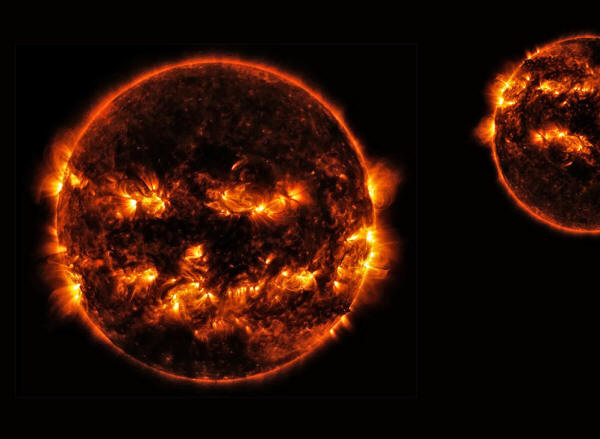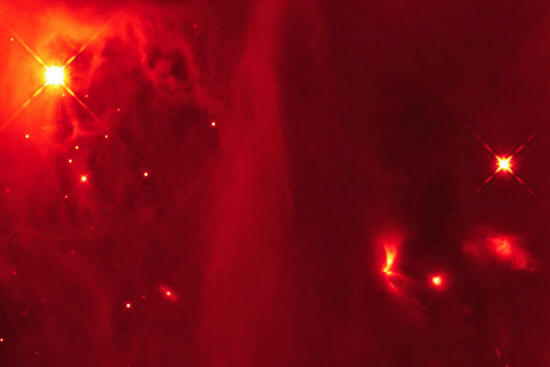|

by Patrick Caughill
June 15,
2017
from
Futurism Website

NASA/GSFC/SDO
In Brief
Scientists believe that most, if not all,
sun-like stars are born with a twin.
Evidence
also suggests that our solar system's sun's twin
may be responsible for knocking the comet that
killed the dinosaurs toward Earth.
Stellar Doppelganger
We have long known
that the dinosaurs were killed by a
catastrophic comet impact with the
Earth’s surface but what if there was some foul play afoot?
Astronomers have
discovered that our sun may have been born with a twin, and an evil
one, at that.
One hypothesis states that every 27 million years, the
evil twin, aptly dubbed
Nemesis, returns to wreck havoc on the solar
system. They believe that
the star lobs a few meteors in our direction as it makes its may
through the outer limits of the solar system.
Research has lead
scientists to believe that most stars are born with at least one
sibling.
According to UC
Berkeley astronomer
Steven Stahler,
"We ran a
series of statistical models to see if we could account for the
relative populations of young single stars and binaries of all
separations in the
Perseus molecular cloud, and the only model
that could reproduce the data was one in which all stars form
initially as wide binaries."

Image Credit:
NASA, ESA and J.
Muzerolle, STScI
Making
Stars
These findings could have implications for our
understanding of how stars are formed.
Looking into how they maintain or break those familial
relationships will give us a deeper understanding of how
our Universe came to be what it is today.
Stahler said,
"Our work is a step
forward in understanding both how binaries form and also the
role that binaries play in early stellar evolution."
Stahler also
pointed out that this could even lead to a better
understanding of how galaxies are formed.
These findings were made possible by the VLA nascent
disk and multiplicity survey (VANDAM) which took a
census of a group of baby stars merely a half-million
years old.
Their findings (Embedded
Binaries and Their Dense Cores)
have been accepted for publication in the Monthly
Notices of the Royal Astronomical Society.
References
|



